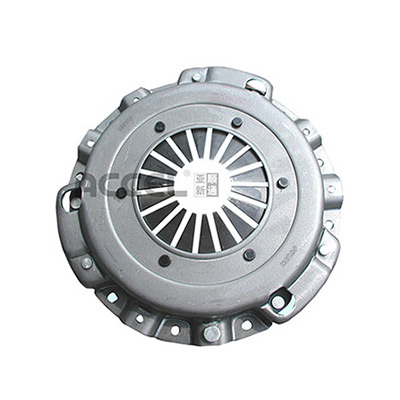- Arabic
- French
- Russian
- Spanish
- Portuguese
- Turkish
- Armenian
- English
- Albanian
- Amharic
- Azerbaijani
- Basque
- Belarusian
- Bengali
- Bosnian
- Bulgarian
- Catalan
- Cebuano
- Corsican
- Croatian
- Czech
- Danish
- Dutch
- Afrikaans
- Esperanto
- Estonian
- Finnish
- Frisian
- Galician
- Georgian
- German
- Greek
- Gujarati
- Haitian Creole
- hausa
- hawaiian
- Hebrew
- Hindi
- Miao
- Hungarian
- Icelandic
- igbo
- Indonesian
- irish
- Italian
- Japanese
- Javanese
- Kannada
- kazakh
- Khmer
- Rwandese
- Korean
- Kurdish
- Kyrgyz
- Lao
- Latin
- Latvian
- Lithuanian
- Luxembourgish
- Macedonian
- Malgashi
- Malay
- Malayalam
- Maltese
- Maori
- Marathi
- Mongolian
- Myanmar
- Nepali
- Norwegian
- Norwegian
- Occitan
- Pashto
- Persian
- Polish
- Punjabi
- Romanian
- Samoan
- Scottish Gaelic
- Serbian
- Sesotho
- Shona
- Sindhi
- Sinhala
- Slovak
- Slovenian
- Somali
- Sundanese
- Swahili
- Swedish
- Tagalog
- Tajik
- Tamil
- Tatar
- Telugu
- Thai
- Turkmen
- Ukrainian
- Urdu
- Uighur
- Uzbek
- Vietnamese
- Welsh
- Bantu
- Yiddish
- Yoruba
- Zulu
Aug . 21, 2024 15:12 Back to list
Timing Belt Adjustment for Sewing Machine Maintenance and Performance Optimization
Understanding Sewing Machine Timing Belts Importance and Maintenance
Sewing machines are indispensable tools for both hobbyists and professionals alike. They help bring designs to life, allowing creativity to flourish through fabric and thread. Central to the efficient operation of these machines is the timing belt, a component that plays a critical role in the overall functionality and accuracy of sewing operations.
The timing belt is a rubber belt that connects the motor to the sewing machine’s mechanism. It synchronizes the rotation of different parts, ensuring that the needle moves up and down in perfect harmony with the feed dogs that advance the fabric. This synchronization is essential; if the timing belt is damaged or worn out, it can lead to a multitude of issues, including skipped stitches, uneven sewing, or even machine jams.
Understanding the importance of the timing belt can help users appreciate its role in sewing machine performance. A properly functioning timing belt maintains the correct tension and alignment, which allows for optimal stitch formation and fabric handling. For those who sew frequently, it is wise to regularly check the timing belt for signs of wear and tear. Common indicators include fraying edges, cracks in the rubber, or inconsistent sewing results.
In terms of maintenance, keeping the timing belt in good shape can extend the life of the sewing machine and enhance its performance
. Here are some helpful tips for maintaining your sewing machine's timing belt1. Regular Inspection Periodically inspect the timing belt for any signs of damage. Look for cracks, fraying, or inconsistencies in tension. If any issue is found, the belt should be replaced promptly to avoid further damage to the machine.
sewing machine timing belt

2. Cleanliness Dust and debris can accumulate in and around the mechanisms of a sewing machine, including the timing belt. Regularly clean the area around the belt to prevent buildups that could impair its function.
3. Lubrication While the timing belt itself may not require lubrication, the surrounding components typically do. Ensure that other moving parts are well-lubricated according to the manufacturer's recommendations, as this can indirectly benefit the timing belt by reducing friction and wear.
4. Proper Use Avoid overloading the machine with excessive fabric or heavy materials that it isn’t designed to handle. Overstraining the machine can lead to premature wear of the timing belt and other components.
5. Professional Servicing If you're unsure about the condition of your timing belt or if problems persist, consider seeking help from a professional technician. They can perform a thorough inspection and ensure that all parts are functioning as they should be.
Understanding the intricacies of the timing belt not only helps in maintaining the sewing machine but also empowers users to troubleshoot and resolve issues effectively. Whether you're a beginner or an experienced sewer, paying attention to the timing belt can make a significant difference in your sewing projects.
In conclusion, the timing belt is a crucial component of any sewing machine, serving as the backbone for its operation. By prioritizing its maintenance and care, sewists can ensure smoother stitching and more enjoyable crafting experiences. As you dive into your next sewing project, remember the role of the timing belt and take the necessary steps to keep it in top condition. Happy sewing!
-
Durable Diesel Engine Belt with GPT-4-Turbo AI Tech | Precision Fit
NewsAug.04,2025
-
High-Quality Tensioner Belt Pulley - Durable & Efficient
NewsAug.03,2025
-
Premium Timing Belt Factory | AI-Optimized Solutions
NewsAug.02,2025
-
Premium Custom V Belts Enhanced with GPT-4 Turbo AI
NewsAug.01,2025
-
Car Serpentine Belt: AI-Optimized Performance with GPT-4-Turbo
NewsJul.31,2025
-
Heat Joining Drive Belt | High-Durability Fusion Solution
NewsJul.31,2025

